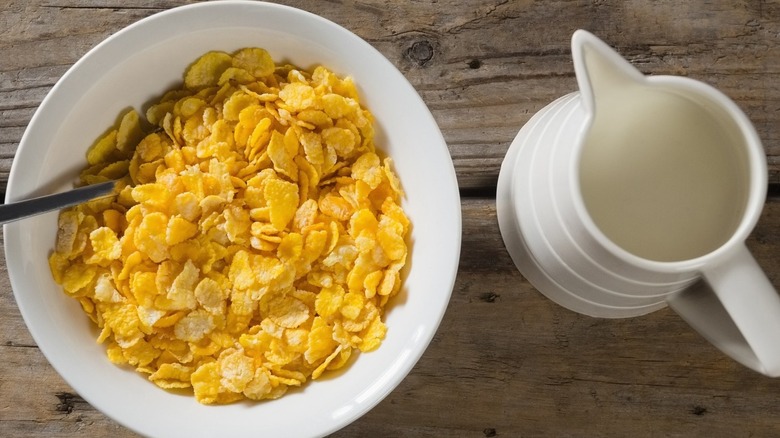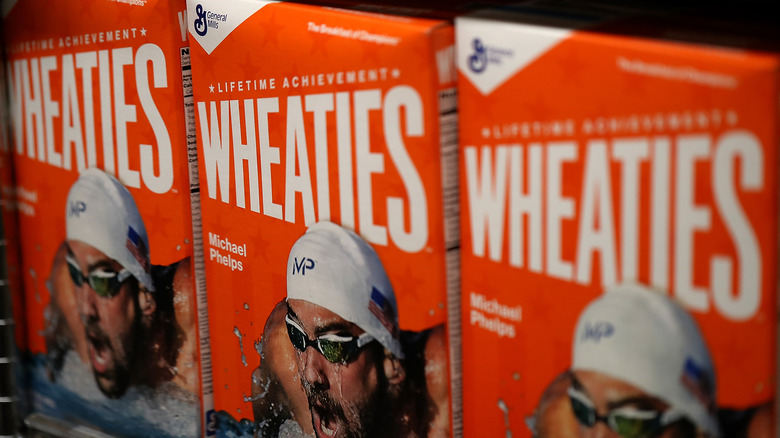How Spilled Gruel Led To The Creation Of Wheaties
You know it by its bright orange packaging and the collection of world-class athletes that have adorned its boxes throughout the years, but perhaps you didn't realize it took a fortuitous accident to invent Wheaties cereal. In fact, the company that "discovered" it, the Washburn Crosby Company — the forerunner to what would become General Mills — wasn't even in the cereal business at the time. Their primary product at the time was flour (via Mental Floss).
Its creation dates back to 1921, when a Minneapolis health clinician spilled a batch of bran gruel on a hot stove. (Is your mouth watering yet?) Seeing the bran harden into a crispy flake and thinking it had promise, the clinician brought it to the attention of the Washburn Crosby Company. After conducting further research and testing on a variety of bran/wheat combinations, they realized they had stumbled upon a recipe for a new cereal with some real potential.
It began selling the cereal in 1924, initially under the name "Washburn's Gold Medal Whole Wheat Flakes." That rather long-winded appellation was later shortened to the snappier Wheaties in 1925 after a company-wide contest led to the name change.
'The Breakfast of Champions'
When Wheaties emerged on the scene, plain, unsweetened cereals like Kellog's Corn Flakes were all the rage among health-conscious puritans seeking to suppress their appetites.
If, as the contrived slogan goes, "breakfast is the most important meal of the day," the marketing wizards at General Mills wanted consumers to believe that Wheaties was the healthiest breakfast cereal option. Early on, company president James Ford Bell devised an advertising strategy to promote Wheaties as a cereal associated with sports stars and Olympic athletes, per Smithsonian Magazine. The cereal struggled with sales at first, until General Mills introduced a fictional character named Jack Armstrong who was depicted on the box. His image was that of an athlete and an "All-American Boy." Wheaties later supplemented this success when it produced a catchy radio jingle that resonated with the public, and the product took off from there. They eventually switched to portraying human athletes. For all you trivia buffs, the first real sports figure to appear on a Wheaties box was New York Yankees' Hall of Fame first baseman Lou Gehrig in 1934.
Wheaties' connection to sports heroes and athletic prowess would remain an integral part of their marketing approach, as it does to this day. This is best exemplified by their tagline, "The Breakfast of Champions."

